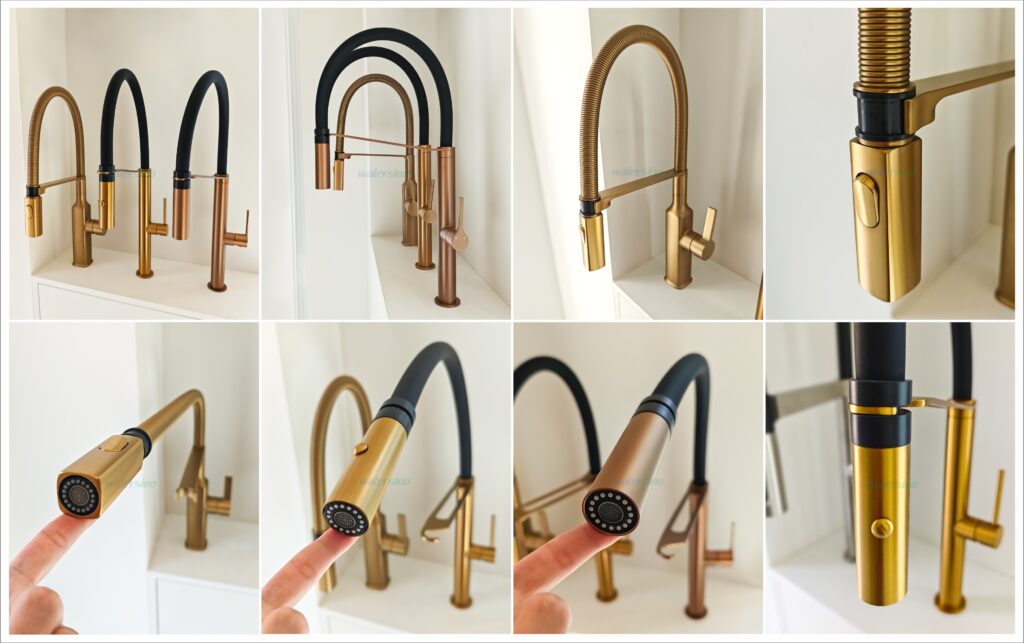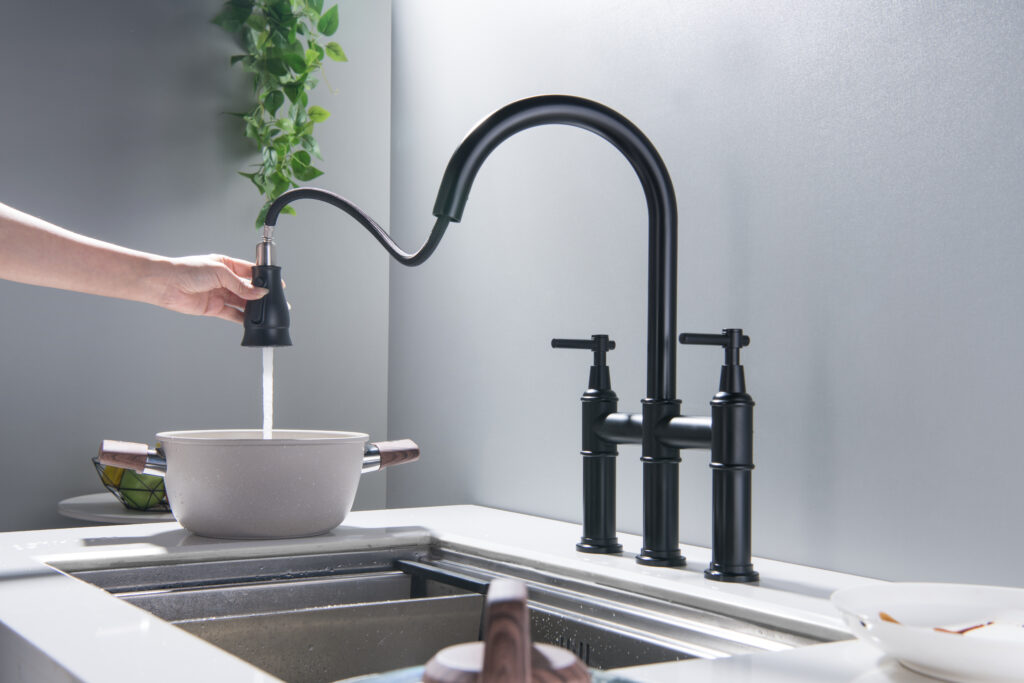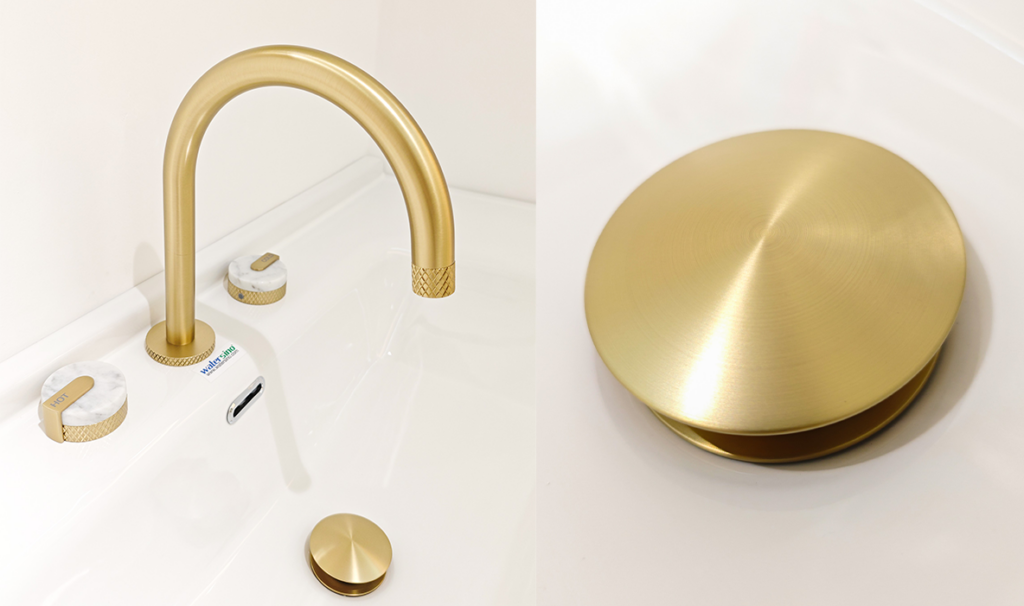Why anti-scald Faucets Are Essential for Schools, Hospitals and Hotels.Hot water scalding injuries pose a significant safety risk in high-traffic public spaces such as schools, hospitals, hotels, and elderly care facilities. To mitigate this hazard, anti-scald faucets equipped with advanced thermostatic control technology have become a critical solution. These intelligent fixtures incorporate precision temperature-regulating valves that instantly adjust water flow to maintain a consistently safe output temperature, typically below 49°C (120°F), effectively preventing accidental burns. Clinical studies demonstrate that implementing such safety tap systems can reduce scald-related emergencies by up to 75%, offering vital protection for sensitive populations including children, the elderly, and individuals with reduced mobility. This article provides a examination of anti-scald faucets, analyzing their essential role in modern public health infrastructure, detailing their mechanical and electronic operational principles, and evaluating their dual advantages in enhancing user safety while optimizing facility maintenance costs.
1. The Growing Need for Anti-Scald Technology in Public Spaces
1.1 The Prevalence of Scalding Injuries
Hot water scalds represent a serious yet preventable public health concern, accounting for approximately 20-30% of all burn-related injuries across medical institutions. This risk is particularly acute in environments serving vulnerable populations—children under five years old, elderly individuals with diminished sensory perception, and hospital patients with limited mobility or cognitive impairments. Clinical data from the American Burn Association reveals alarming statistics: nearly one-third of all burn incidents occurring in hospitals and long-term care facilities stem from exposure to dangerously hot tap water.
The physiological vulnerability of these groups compounds the danger. Children’s skin is 40-60% thinner than adult skin, meaning they sustain full-thickness burns in just 2-3 seconds at 140°F (60°C). Similarly, elderly individuals often experience delayed thermal perception due to age-related neuropathy, while immobilized patients may lack the physical ability to quickly withdraw from scalding water. Educational settings present additional challenges, as curious toddlers in daycare centers may accidentally turn on hot water faucets during handwashing routines. These factors collectively underscore the critical need for reliable temperature control mechanisms in public water systems.

1.2 Legal and Safety Regulations
The global regulatory landscape has evolved significantly to address scald prevention through both mandatory standards and best practice guidelines. In North America, the U.S. Consumer Product Safety Commission (CPSC) enforces stringent recommendations, mandating that residential and commercial water heaters maintain maximum output temperatures of 120°F (49°C)—the threshold at which water requires 10 minutes of continuous exposure to cause third-degree burns.
Europe has implemented even more comprehensive protections through the EN 15091 standard, which requires installation of thermostatic mixing valves (TMVs) in all public buildings with hot water systems. These devices must undergo rigorous testing to maintain water temperature within ±2°C of preset safety levels, even during pressure fluctuations.
Non-compliance carries substantial consequences. Facilities operating without certified anti-scald systems face not only regulatory penalties but increased exposure to negligence lawsuits—particularly in healthcare and education sectors where duty of care obligations are heightened. Insurance providers increasingly require proof of compliant installations as a precondition for coverage, making thermostatic faucet systems a fundamental component of risk management strategies. The convergence of ethical responsibility, legal mandates, and financial prudence has transformed these devices from optional safety features into essential infrastructure components for any public or commercial establishment.
2. How anti-scald Faucets Work: Technology Behind the Safety
2.1 Thermostatic Faucets and Pressure Balancing Valves
There are two primary types of anti-scald faucets, each functioning differently to prevent burns:
- Thermostatic Faucets:Use a thermal sensor (wax or liquid cartridge) to detect water temperature. Automatically adjust the mix of hot and cold water to maintain a preset safe temperature (typically 98.6°F–104°F / 37°C–40°C).Ideal for hospitals and hotels where precise temperature control is critical.
- Pressure Balancing Valves:React to sudden drops in cold water pressure (e.g., when a toilet flushes). Reduce hot water flow to prevent scalding. Commonly used in schools and residential buildings.
2.2 Key Components of an anti-scald Faucet
- Thermostatic Cartridge: The brain of the system, adjusting water temperature in real time.
- Temperature Control Valve: Limits maximum output temperature.
- Safety Stop Feature: Prevents accidental adjustment beyond safe limits.
3. Why Schools Need anti-scald Faucets
3.1 Protecting Children from Burns
Children’s skin burns four times faster than adult skin at the same temperature. A 2second exposure to 140°F (60°C) water can cause third degree burns in a child. Installing safety taps in school restrooms, cafeterias, and science labs is crucial.
3.2 Compliance with Child Safety Laws
Many U.S. states and EU countries mandate anti-scald devices in schools. For example:
- California’s Title 24 requires thermostatic mixing valves in all K12 schools.
- UK’s Building Regulations Part G enforces temperature limits in educational facilities.
3.3 Cost Savings for Schools
Reduces liability risks from burnrelated lawsuits.
Lowers insurance premiums due to improved safety compliance.
4. The Critical Role of anti-scald Faucets in Hospitals
4.1 Protecting Patients with Reduced Sensitivity
Elderly patients and those with diabetes or nerve damage may not feel scalding water.
Thermostatic faucets ensure a safe, consistent temperature for handwashing and bathing.
4.2 Infection Control Benefits
Prevents Legionella growth by maintaining optimal water temperatures (hot enough to kill bacteria but not too hot for users).
Reduces crosscontamination risks by eliminating the need for manual temperature adjustments.
4.3 Case Study: Hospital Burn Incidents Reduced by 90%
A 2022 study in the Journal of Burn Care & Research found that after installing thermostatic faucets, a major U.S. hospital saw:
90% reduction in scald injuries among patients.
40% decrease in waterrelated complaints.

5. Why Hotels Must Prioritize Anti-Scald Solutions
5.1 Enhancing Guest Safety and Satisfaction
Modern travelers demand consistently safe and comfortable water temperatures in showers and sinks. A single scald incident can not only cause physical harm but also generate negative online reviews, damage brand reputation, and lead to costly lawsuits.
5.2 Reducing Liability Risks
The hospitality industry faces significant legal exposure from scalding accidents, with recent settlements exceeding $3 million per incident. Major chains like Marriott and Hilton now mandate certified temperature control valves (set to max 120°F/49°C) in all guest bathrooms as part of their global safety standards.
5.3 Energy and Water Efficiency
Smart thermostatic faucets automatically optimize hot water usage, reducing waste by 18-22% compared to conventional fixtures. This translates to substantial utility savings while meeting LEED water conservation requirements. The combination of safety, sustainability and cost-efficiency makes anti-scald technology essential for modern hospitality operations.
6. LongTerm Benefits and ROI of anti-scald Faucets
6.1 Cost Savings vs. Traditional Faucets
| Značajka | Standard Faucet | Anti-Scald Faucet |
| Burn Risk | High –No temperature control | None –Built-in thermostatic regulation |
| Maintenance | Frequent repairs | Long-lasting |
| Water Waste | High–Unregulated flow and temperature | Optimized – Precise flow and heat control |
Anti-scald faucets provide significant long-term savings by reducing liability risks, lowering repair costs, and minimizing water waste. Their advanced temperature control prevents accidental burns, while high-quality materials ensure extended durability.
6.2 Compliance with Green Building Standards
Modern anti-scald faucets support sustainability initiatives by meeting key environmental and safety benchmarks:
- LEED Certification rewards buildings with water-saving thermostatic faucets, contributing to energy efficiency credits.
- WELL Building Standard promotes safe water temperatures (below 120°F/49°C) to protect occupant health.
6.3 Watersino’s Advanced Anti-Scald Solutions
Watersino’s cutting-edge faucets offer:
- Smart temperature monitoring with digital displays for real-time adjustments.
- Self-cleaning cartridges that reduce mineral buildup, ensuring minimal maintenance.
- 5-year commercial warranty, guaranteeing reliability for high-traffic installations.

By integrating safety, efficiency, and smart technology, Watersino’s anti-scald faucets deliver a strong return on investment for both commercial and residential applications.
Anti-scald faucets are a musthave for schools, hospitals, and hotels. They prevent injuries, reduce legal risks, and improve efficiency.
Upgrade to Watersino’s thermostatic faucets today—ensure safety, compliance, and peace of mind!
No, only models with thermostatic cartridges or pressurebalancing valves provide true scald protection.
Yes, commercial kitchens often use temperature control valves to prevent burns.
Highquality models like Watersino's last 10+ years with minimal maintenance.



